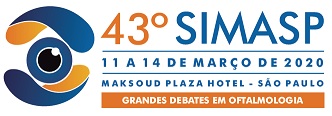Dados do Trabalho
Título
TO ANALYZE THE DEAD SPACE SYRINGE FOR INTRA-VITREOUS INJECTIONS
Introdução
The introduction of antibody-based biologics targeting of the vascular endothelial growth factor (VEGF) to treat retinal diseases changed the approach for maculopathies. The injections are highly effective and have markedly decreased the risk of visual impairment. Since this kind of diseases are chronic in their nature, and most patients need long-term therapy to suppress disease activity the necessity to reduce the waste has to be considered. Many countries developed methods to compound in multiples doses the anti-VEGF without compromising drug stability or activity. We evaluated the residual syringe volume waste sed for anti-VEGF injections in the Brazilian market.
Métodos
We evaluated the amount of fluid retained in eight different types of insulin/tuberculin syringes with permanent needle design and without needle design used to perform intra-vitreous injections of anti-VEGF commercially available in the Brazilian marketing. Firstly, we divided the syringes types in group of ten samples and they all were weighted using a precise (0.01g) caliper balance.
In a second phase we filled the syringes with water, removed air bubbles and then pushed the syringe piston to the mark of 0,05ml. All the syringes were immediately weighted again. Then, we simulated an intra-vitreous injection pushing the piston to the end and we immediately weighted. In summary, we weighted the syringes before, within water and after simulation the injection to evaluate the residual waste volume of each type of syringe.
Resultados
Mean residual weight into the dead space of syringes with permanent needle design was between 0.002 to 0.006 g and the syringe without needle was 0.032g. No statistic significant was observed in samples of syringe with permanent needle design but comparing all syringes with permanent needle design to the syringe without needle all results were statistically significant (P < 0.01). This indicates that a significant amount of volume loss is due to dead space if we use syringe without needle design.
Conclusões
In conclusion, we highly incentive physicians to use syringe with permanent needle to perform intra-vitreous injections. New techniques to compounder into multiple doses the anti-VEGF using syringes with permanent needle is necessary to reduce the treatment cost per patient.
Palavras Chave
Anti-VEGF, Syringe with permanent needle, intra-vitreous injections, maculopathies
Arquivos
Área
Retina
Instituições
Universidade Catolica de Brasilia - Distrito Federal - Brasil
Autores
ANDERSON TEIXEIRA, ISADORA ROSA, AMELIA PEREIRA, CAMILA SALAROLI
